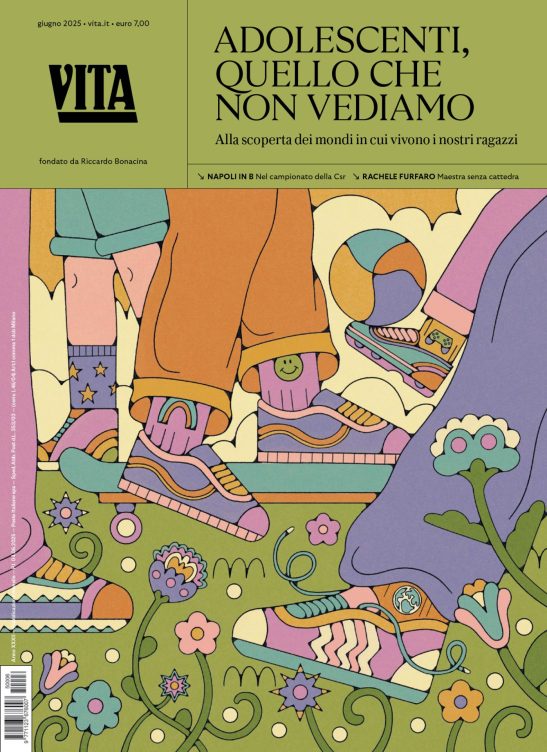Politica
Turkey: Heated debate over amendment to allow headscarves in Universities
AKP's move to free headscarves in the universities has lead to strong reactions from secularists. Some fear the end of the secular state, others say limited freedom is hypocritical
di Bianet
The ruling AKP's move to free headscarves in the universities has lead to strong reactions from secularists. Some fear for the end of the secular state, others argue that limited freedom is hypocritical. The ruling Justice and Development Party (AKP) and the opposition Nationalist Movement Party (MHP) have jointly moved a draft bill for a constitutional amendment to guarantee freedom for women students wear headscarves at university.
AKP and MHP have sufficient votes to pass amendment
The bill suggests amending Articles 10 and 42 of the constitution, dealing with equality and the right to education respectively, as well as Article 17 of the Higher Education Council (YÖK) Law. The bill has been signed by 70 MHP parliamentarians as well as those from the AKP. The text is then handed over to the Speaker of Parliament, and then to the Parliamentary Constitution Commission.
The bill will then be voted on in parliament, twice for the constitutional amendments and once for the change in YÖK Law. A majority of 367 (of the 549 MPs) is needed to pass the changes. As the MHP and AKP together hold 410 seats in parliament, it is likely that the constitutional amendments will pass. Should the number of supporting votes be under 367, a referendum would take place. President Gül has the option to call for a referendum even if a majority passes the amendments, but he has give no indication of his intentions on that matter.
There have been strong reactions, both among political parties and the public. The Republican People?s Party (CHP) and the Democratic Left Party (DSP) believe that the end of the laicist state is nigh and that a relaxation of the ban at university represents the beginning of a slippery slope towards allowing it everywhere.
The Radikal newspaper expressed the fears of one section of society on its front page today: A picture of ?The Scream? by Edvard Munch, with the screaming person wearing a headscarf?
Others are complaining that any ban on the headscarf represents a violation of personal rights and freedoms and that it is hypocritical to limit the relaxation of the ban to universities.
What about other people's rights?
There has further been criticism that the AKP is pandering to its supporters, using the discourse of ?rights and freedoms?, but without allowing further democratisation for others. Lawyer Ali Koc from the Izmir Bar Association told bianet that the change of Article 17 of YÖK law would not bring freedom to universities. The continuing existence of the YÖK discipline regulations and the lack of reforms mean that this new amendment is only an order to universities. The current discipline regulations mean that university administrations hold a lot of power in controlling student behaviour.
Koc gave the example of a female and male student at Selcuk University, about whom an investigation was launched after they held hands on campus. ?There are many such examples. There are students in Istanbul who have been taken to the discipline committee for playing the guitar or dancing folk dances. In the regulations there is even a disciplinary misdemeanour of ?sitting on seats reserved for special guests.This is not a matter of just changing a few articles.?
Koc believes that without a discussion of the subordinate status of women in religion, allowing them to study would not set them free but only provide them with education: ?With an amendment to this article, there will not be more freedom at university. First of all there needs to be a discussion in society about the status of women, and then the discipline regulations need to be abolished.?
Article 17
Article 17 currently states that students can wear any attire which is not forbidden by law. The proposed amendment reads:
?No one can be deprived of higher education because they cover their heads and there can be no implementations in that direction. However, the style of covering must leave the face of the person open in order to allow identification and must be tied under the chin.? (GG/TK/AG)
The first part of the article has used information from an article by Ercan Yavuz in Today?s Zaman on 30.01.08
Cosa fa VITA?
Da 30 anni VITA è la testata di riferimento dell’innovazione sociale, dell’attivismo civico e del Terzo settore. Siamo un’impresa sociale senza scopo di lucro: raccontiamo storie, promuoviamo campagne, interpelliamo le imprese, la politica e le istituzioni per promuovere i valori dell’interesse generale e del bene comune. Se riusciamo a farlo è grazie a chi decide di sostenerci.
